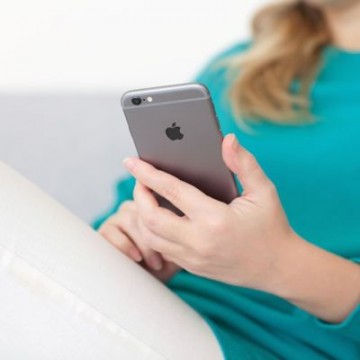Personal Tech for Women: 5 Things To Know About Technologies Designed Without Women in Mind
Monday, April 06, 2015

1. Self-tracking app that omits menstruation
Apple’s Health app tracks calories, heart rate and blood alcohol content, among other metrics that concern both men and women. Marketed as an all-encompassing fitness tracker, Health does not track menstruation, however. And for that reason it’s received a fair amount of backlash by those who review personal tech items. If this app is supposed give you “a dashboard of all your health data” why is this very vital part of a woman’s health excluded? Health even tracks your daily intake of chromium and sodium, but not menstruation – the one thing women have been tracking for eons, before technologies, and long before they were concerned with how many steps they walk per day. So why should women download one of a million separate period-tracking apps to work in conjunction with one that promises to be expansive?
2. Alternatives to the male-perspective dating app
Tinder co-founder Whitney Wolfe left the dating app company to start her own – one that aims to remedy women-specific issues with dating apps. The idea is to avoid dead-end conversations and hook-ups based solely on looks. On Bumble, women must initiate the chat, and if she doesn’t within 24 hours, the match is automatically deleted. It’s safe to say the idea could make women feel a little more secure with their choices, along with what they’re revealing. Bumble includes jobs and education too, so you’ve got more context to compatibility when you’re swiping through piles of potential hook-ups. Then there’s Antidate, another app where women have to make the first move through a kind of two-way mirror scenario. Only women can view men, and the men must play the passive role until they’re ‘tapped’. Or try Wyldfire, an app where men must be elected and voted to join by women.
3. Sex-tracking apps may only be for narcissists
Off the bat, apps that track sexual behavior are pretty male-centric. An app like Spreadsheets tracks everything from noise levels to average thrusts per minute, and the duration of the sex act. Sex Stamina Tester measures and analyzes data about one’s sexual performance and then compares it with others. Just place your phone on your pillow and go at it. And BlackBook DidIt might be the most misogynistic of all. They even market the app for the “world's biggest douche.” It’s a digital journal that tracks the details of sexual encounters that includes the name, pic and contact info “for each notch on your bedpost, because come on, you can't be expected to keep track of all that shit, bro.” Enough said.
4. Smartwatches for masculine wrists
Smartwatches and the wearables market definitely offer unisex options. But just look at the sheer size of a smartwatch on a woman and you’ll understand who was leading the development team. And while the watch can perform for everybody, the majority of them still look too clunky, sporty, or just plain “manly.” Even most marketing photos show these babies snapped around a big, hairy wrist. The Apple watch will likely break new ground with its sleek, light and casual design that comes in two sizes, but the rest of the industry might have some catching up to do. Women make up almost 50 percent of smartphone users, so if the smartwatch market wants to take off, better make sure everyone can wear them.
5. Phones might be too big for female hands
While some may argue size doesn’t matter, when it comes to handling devices perhaps it does. The Apple watch might be a perfect fit for a woman’s wrist, but the iPhone 6 has a 4.7-inch screen, while the souped-up iPhone 6 Plus measures in at 5.5 inches. The Atlantic published an intriguing report about this very topic, citing all kinds of issues women might encounter when handling the phone. One-handed functionality is limited for women when it comes to “thumbing” around the displays and taking photos. The article also includes research by sociologist Zeynep Tufekci, who concluded that the average female hand is two centimeters smaller than the average male’s. It makes a significant difference when navigating a device that is designed for all hands.

Related Articles
- Personal Tech for Women: 5 Things You Need to Know About 3D Printing At Home
- Personal Tech for Women: 5 Things You Need To Know About Apps For On-Demand Services in PDX
- Personal Tech for Women: 5 Things You Need To Know About Fitness Trackers
- Personal Tech for Women: 5 Things You Need To Know About Wearables




Follow us on Pinterest Google + Facebook Twitter See It Read It